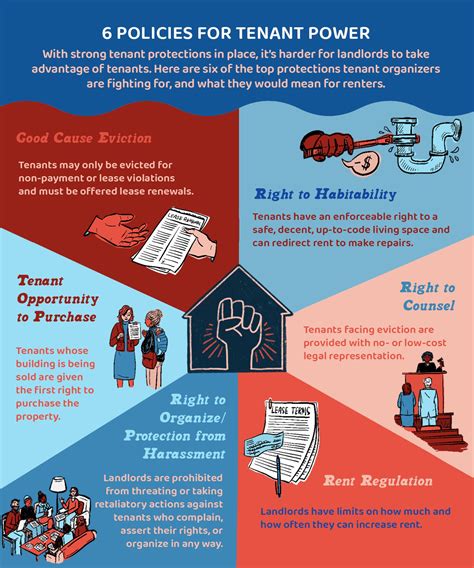
Seabass, once a menu mainstay, is increasingly vanishing from restaurant offerings as skyrocketing prices driven by overfishing, climate change, and geopolitical factors force chefs to seek more sustainable and affordable alternatives.
Restaurants across the United States are quietly removing Chilean seabass from their menus, a move driven by a perfect storm of rising costs and growing concerns about the fish’s sustainability. Once considered a high-end delicacy, Chilean seabass, also known as Patagonian toothfish, has become increasingly expensive, pushing chefs to seek more affordable and environmentally responsible alternatives.
“The price has definitely gone up,” said Tim Hynes, the owner of Back Bay Grill in Portland, Maine, in an interview with Yahoo News. Hynes noted that the cost had nearly doubled in recent years, making it difficult to justify keeping the fish on the menu. “At some point, it just prices itself out of being on the menu,” he explained.
The surge in seabass prices can be attributed to several interconnected factors. Overfishing remains a persistent threat, depleting seabass populations in their native Southern Ocean habitats. Illegal, unreported, and unregulated (IUU) fishing practices further exacerbate the problem, undermining conservation efforts and driving down overall fish stocks.
Climate change is also playing a significant role. Warmer ocean temperatures and changing currents disrupt seabass migration patterns and breeding cycles, making it harder for the fish to thrive. These environmental stressors contribute to lower yields and increased fishing costs.
Geopolitical instability and supply chain disruptions add another layer of complexity. The ongoing conflict in Ukraine, for example, has disrupted global trade routes and increased transportation costs, impacting the availability and price of seafood worldwide. Sanctions against Russia, a major player in the seafood industry, have also contributed to market volatility.
As seabass becomes less accessible, chefs are turning to a variety of alternatives. These include black cod (sablefish), barramundi, and other white fish species that offer similar textures and flavors at a more reasonable price. Many chefs are also prioritizing locally sourced and sustainably farmed seafood options, reducing their reliance on imported Chilean seabass.
The trend away from Chilean seabass reflects a broader shift in consumer attitudes towards seafood. Diners are increasingly aware of the environmental and social impacts of their food choices and are demanding more sustainable options. Restaurants that prioritize transparency and responsible sourcing are gaining a competitive edge in the marketplace.
“Customers are definitely more aware of sustainability,” said Sarah Grueneberg, chef and partner at Monteverde Restaurant & Pastificio in Chicago. “They’re asking questions about where their food comes from and how it’s produced.”
The vanishing of Chilean seabass from menus is not just a culinary trend; it is a reflection of the complex challenges facing the global seafood industry. Overfishing, climate change, and geopolitical factors are all contributing to rising prices and declining fish stocks. As consumers become more aware of these issues, they are driving demand for more sustainable and responsible seafood choices. Restaurants that adapt to this changing landscape will be best positioned for long-term success.
The Rise and Fall of Chilean Seabass
Chilean seabass, despite its name, is not actually a type of bass. It is a marketing name for the Patagonian toothfish (Dissostichus eleginoides) and the Antarctic toothfish (Dissostichus mawsoni), two closely related species found in the cold waters of the Southern Ocean. The name “Chilean seabass” was coined in the late 1970s by a fish wholesaler looking to make the toothfish more appealing to American consumers.
Prior to this rebranding, the toothfish was largely ignored by commercial fisheries. It was considered an undesirable bycatch species, with a dark, oily flesh that was not particularly palatable. However, once the name “Chilean seabass” was introduced, along with improved handling and preparation techniques, the fish quickly gained popularity.
Chefs embraced Chilean seabass for its rich, buttery flavor and firm, flaky texture. It became a signature dish in many high-end restaurants, commanding premium prices. The demand for Chilean seabass soared, leading to a rapid expansion of the fishery in the Southern Ocean.
Unfortunately, the rapid growth of the Chilean seabass fishery was not matched by effective management and conservation measures. Overfishing quickly became a problem, with some populations of toothfish being depleted to dangerously low levels. Illegal fishing further exacerbated the problem, undermining efforts to regulate the fishery.
The environmental consequences of overfishing Chilean seabass are significant. Toothfish are long-lived, slow-growing fish that play a crucial role in the Southern Ocean ecosystem. Their removal can disrupt the food web and have cascading effects on other species.
In addition, the methods used to catch Chilean seabass can also have negative impacts on the environment. Bottom trawling, a common fishing technique, can damage sensitive seafloor habitats and harm non-target species. Longlining, another method used to catch toothfish, can entangle seabirds and marine mammals.
Sustainability Efforts and Certification
In response to concerns about overfishing and environmental damage, efforts have been made to improve the sustainability of the Chilean seabass fishery. The Commission for the Conservation of Antarctic Marine Living Resources (CCAMLR) is the international body responsible for managing fisheries in the Southern Ocean, including the Chilean seabass fishery.
CCAMLR has implemented a number of measures to promote sustainable fishing practices, including catch limits, fishing gear restrictions, and monitoring and enforcement programs. These measures have helped to reduce overfishing and improve the health of toothfish populations in some areas.
In addition, some Chilean seabass fisheries have been certified as sustainable by independent organizations such as the Marine Stewardship Council (MSC). MSC certification indicates that a fishery meets certain environmental standards and is managed in a responsible manner.
However, despite these efforts, challenges remain. Illegal fishing continues to be a problem in some areas, and climate change is posing new threats to toothfish populations. Consumers can play a role in promoting sustainable Chilean seabass fisheries by choosing MSC-certified products and supporting restaurants that prioritize sustainable seafood sourcing.
Alternatives to Chilean Seabass
As Chilean seabass becomes less available and more expensive, chefs and consumers are exploring a variety of alternative seafood options. Some popular alternatives include:
-
Black Cod (Sablefish): Black cod, also known as sablefish, is a rich, buttery fish with a similar flavor and texture to Chilean seabass. It is native to the North Pacific Ocean and is considered a sustainable seafood choice when sourced from well-managed fisheries.
-
Barramundi: Barramundi is a versatile white fish that is native to the Indo-Pacific region. It has a mild, slightly sweet flavor and a firm, flaky texture. Barramundi can be farmed sustainably in some areas, making it a good alternative to Chilean seabass.
-
Grouper: Grouper is a type of white fish that is found in warm waters around the world. It has a mild, slightly sweet flavor and a firm, flaky texture. However, some grouper species are overfished, so it is important to choose sustainably sourced grouper.
-
Mahi-Mahi: Mahi-mahi, also known as dolphinfish, is a fast-growing, highly migratory fish that is found in tropical and subtropical waters around the world. It has a mild, slightly sweet flavor and a firm, flaky texture. Mahi-mahi is generally considered a sustainable seafood choice.
-
Other White Fish: Other white fish species, such as cod, haddock, and pollock, can also be used as alternatives to Chilean seabass. These fish are generally more affordable and readily available than Chilean seabass. However, it is important to choose sustainably sourced options, as some white fish populations are overfished.
The Future of Seafood
The challenges facing the Chilean seabass fishery are indicative of broader issues facing the global seafood industry. Overfishing, climate change, pollution, and habitat destruction are all threatening fish populations and the livelihoods of those who depend on them.
To ensure a sustainable future for seafood, it is essential to adopt responsible fishing practices, reduce pollution, protect marine habitats, and address climate change. Consumers can play a vital role by making informed seafood choices and supporting sustainable fisheries.
Restaurants and chefs can also make a difference by prioritizing sustainable seafood sourcing and educating their customers about the importance of responsible seafood consumption. By working together, we can ensure that future generations will be able to enjoy the bounty of the ocean.
The story of Chilean seabass serves as a cautionary tale about the potential consequences of unsustainable fishing practices. However, it also offers hope that with effective management and responsible consumption, we can protect our oceans and ensure a sustainable future for seafood.
FAQ: The Vanishing of Chilean Seabass
1. Why is Chilean seabass disappearing from restaurant menus?
The primary reasons are soaring prices and sustainability concerns. Overfishing, climate change impacts, and geopolitical factors have driven up the cost of Chilean seabass, making it less affordable for restaurants. Additionally, increasing consumer awareness of sustainability issues has led many restaurants to seek more environmentally responsible alternatives. As Tim Hynes, the owner of Back Bay Grill, stated, “At some point, it just prices itself out of being on the menu.”
2. What factors are contributing to the rising price of Chilean seabass?
Several factors are at play:
- Overfishing: Unsustainable fishing practices have depleted seabass populations in their native habitats.
- Illegal Fishing: IUU fishing further reduces fish stocks and undermines conservation efforts.
- Climate Change: Warmer ocean temperatures and changing currents disrupt seabass migration and breeding, reducing yields.
- Geopolitical Instability: Conflicts like the war in Ukraine and related sanctions disrupt supply chains and increase transportation costs, as stated earlier in the analysis.
3. What are some sustainable alternatives to Chilean seabass?
Chefs are increasingly turning to more sustainable and affordable options, including:
- Black Cod (Sablefish): Known for its rich, buttery flavor and similar texture to Chilean seabass.
- Barramundi: A versatile white fish that can be sustainably farmed in some regions.
- Grouper: Choose sustainably sourced grouper species.
- Mahi-Mahi: A fast-growing fish generally considered sustainable.
- Other White Fish: Cod, haddock, and pollock, but ensure they are sustainably sourced.
4. What is the Marine Stewardship Council (MSC) certification, and why is it important?
The Marine Stewardship Council (MSC) is an independent organization that certifies fisheries as sustainable. MSC certification indicates that a fishery meets specific environmental standards and is managed responsibly. Choosing MSC-certified seafood helps consumers support sustainable fishing practices and protect ocean ecosystems. It provides assurance that the fish was caught using methods that minimize environmental impact and maintain healthy fish populations.
5. How can consumers make more sustainable seafood choices?
Consumers can make a significant impact by:
- Choosing MSC-certified products: Look for the MSC label when purchasing seafood.
- Asking restaurants about their sourcing practices: Inquire about the origin and sustainability of the seafood they serve.
- Supporting restaurants that prioritize sustainable seafood: Patronize establishments that are committed to responsible sourcing.
- Educating themselves about sustainable seafood: Learn about different fish species and their conservation status.
- Trying alternative seafood options: Explore and enjoy a variety of sustainable seafood choices.
- Avoiding seafood from unsustainable fisheries: Be aware of which fisheries are known for overfishing or damaging practices.
In-Depth Analysis
The decline of Chilean seabass on restaurant menus represents more than just a shift in culinary trends; it is a symptom of deeper, more systemic problems within the global seafood industry. The factors contributing to this decline – overfishing, climate change, and geopolitical instability – are not isolated incidents but rather interconnected challenges that demand a comprehensive and coordinated response.
Overfishing and Illegal Fishing
The initial rise in popularity of Chilean seabass led to a rapid expansion of the fishery, often without adequate management and regulation. This resulted in overfishing, which depleted seabass populations in several key areas. The slow-growing, long-lived nature of toothfish makes them particularly vulnerable to overfishing, as they take a long time to reach maturity and reproduce.
Illegal, unreported, and unregulated (IUU) fishing further exacerbates the problem. IUU fishing vessels often operate without regard for conservation measures, catching fish in protected areas or exceeding catch limits. This undermines efforts to rebuild fish stocks and maintain healthy ecosystems. Combating IUU fishing requires international cooperation, strong enforcement measures, and technological solutions such as satellite monitoring and DNA testing.
Climate Change Impacts
Climate change is having a profound impact on marine ecosystems worldwide, and the Chilean seabass fishery is no exception. Warmer ocean temperatures and changing currents are altering the distribution and abundance of toothfish, making it more difficult for fishermen to locate and catch them. These environmental stressors can also affect the fish’s physiology and reproduction, reducing their overall productivity.
Ocean acidification, another consequence of climate change, can also impact marine life. As the ocean absorbs carbon dioxide from the atmosphere, it becomes more acidic, which can harm shellfish and other marine organisms that form the base of the food web.
Addressing climate change requires a global effort to reduce greenhouse gas emissions and transition to a low-carbon economy. This includes investing in renewable energy, improving energy efficiency, and promoting sustainable land use practices.
Geopolitical Instability and Supply Chain Disruptions
Geopolitical events can also have a significant impact on the seafood industry. The ongoing conflict in Ukraine, for example, has disrupted global trade routes and increased transportation costs, affecting the availability and price of seafood. Sanctions against Russia, a major player in the seafood industry, have also contributed to market volatility.
Supply chain disruptions can also arise from other factors, such as natural disasters, labor shortages, and trade disputes. Building more resilient and diversified supply chains can help mitigate the impact of these disruptions. This includes investing in local and regional food systems, promoting fair trade practices, and diversifying sourcing options.
The Role of Consumers and Restaurants
Consumers and restaurants play a crucial role in promoting sustainable seafood consumption. By making informed choices and supporting sustainable fisheries, they can help drive demand for responsibly sourced seafood and encourage better management practices.
Consumers can look for ecolabels such as the MSC certification to identify seafood that has been certified as sustainable. They can also ask restaurants about their sourcing practices and choose establishments that prioritize sustainable seafood.
Restaurants can make a difference by partnering with sustainable seafood suppliers, educating their customers about sustainable seafood choices, and offering a variety of sustainable seafood options on their menus. They can also participate in sustainable seafood initiatives and collaborate with other restaurants and organizations to promote responsible seafood consumption.
Policy Recommendations
To ensure a sustainable future for the Chilean seabass fishery and the global seafood industry, policymakers need to implement a range of measures, including:
- Strengthening fisheries management: This includes setting science-based catch limits, implementing effective monitoring and enforcement programs, and protecting critical habitats.
- Combating illegal fishing: This requires international cooperation, strong enforcement measures, and technological solutions to track and deter IUU fishing vessels.
- Addressing climate change: This includes reducing greenhouse gas emissions, investing in climate adaptation measures, and protecting marine ecosystems from the impacts of climate change.
- Promoting sustainable aquaculture: Aquaculture can help meet the growing demand for seafood, but it must be done in a sustainable manner. This includes minimizing environmental impacts, using responsible farming practices, and ensuring the welfare of farmed fish.
- Supporting research and innovation: Investing in research and innovation can help develop new technologies and management strategies to improve the sustainability of the seafood industry.
Conclusion
The vanishing of Chilean seabass from restaurant menus is a stark reminder of the challenges facing the global seafood industry. Overfishing, climate change, and geopolitical instability are all contributing to rising prices and declining fish stocks. To ensure a sustainable future for seafood, it is essential to adopt responsible fishing practices, reduce pollution, protect marine habitats, and address climate change.
Consumers, restaurants, and policymakers all have a role to play in promoting sustainable seafood consumption. By working together, we can protect our oceans and ensure that future generations will be able to enjoy the bounty of the sea. The future of seafood depends on our collective commitment to sustainability. The story of Chilean seabass is a powerful example of how consumer choices, responsible fisheries management, and a dedication to environmental protection can impact the health and future of our oceans.









